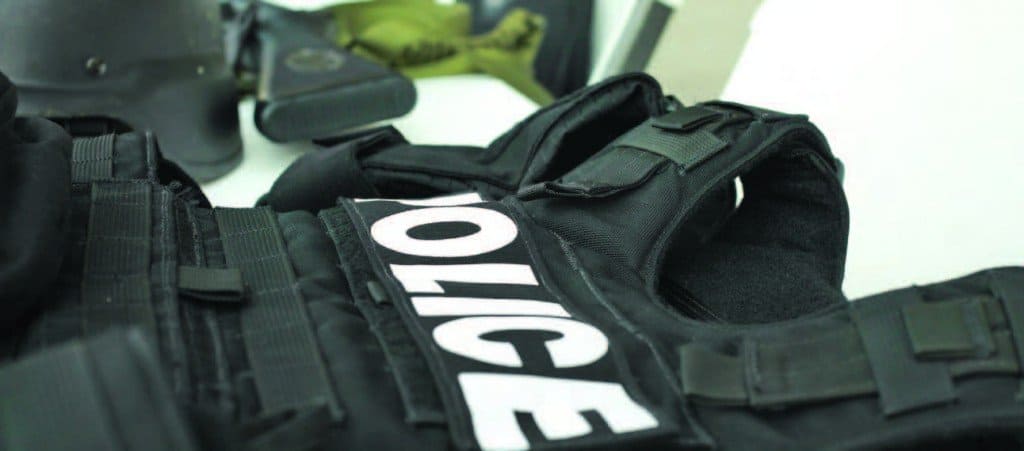When it comes to choosing the best possible bullet resistant vest, agencies and officers need to choose a vest that will actually meet their needs. In order for this to happen, there are a number of conditions they must keep in mind.
Bullet resistant vests are often noted as being “bulletproof” vests, but that’s not what they are. These vests are extremely important for modern-day law enforcement. While these vests do give protection from guns, bullet resistant vests also offer some protection from knife assaults and slashes. They can also give officers protection from blunt force trauma, often seen with steering wheel impacts in automobile accidents.
The National Institute of Justice (NIJ) establishes the levels of ballistic protection. This organisation is similar to the Underwriter Laboratories, setting standards and keeping an eye on the quality when it comes to law enforcement.
The NIJ ballistic protection standards are divided into levels – level II and IIIA are typically used to classify protection levels provided against any array of gun ammo and some 00 buck loads. The higher the number is, the better the ballistic protection level.
There are four levels of criteria that you need to consider when you pick the best possible bullet resistant vest. And, they are:
• Ballistic Protection
• Comfort
• Covertness
• Price
1 – Ballistic Protection
The first thing you need to consider is the amount of ballistic protection that’s available that protects against the duty carry ammo. It’s important you purchase a bullet resistant vest that provides protection against the ammo for your service weapon.
After you make the choice, you need to think about what you’d expect to see in your neck of the woods. Inner city cops are going to need different ballistic protection than a rural area cope. Make sure you realize what kind of threats you’d expect and buy your vest accordingly.
2 – Comfort of the Bullet Resistant Vest
After you chosen the ballistic protection level that’s best for your working conditions, you need to consider your comfort.
Comfort coincides with ballistic protection. The more protection a vest offers, the bullet resistant vest become thicker and heavier. You may get a higher protection level from a Level III-A vest; but, if it’s too bulky and it’s not comfortable, you’ll not want to wear it. Make sure you speak to your co-workers and the local uniform supply store to learn more about your bullet resistant vest options. Talk with co-workers about what kind they’re wearing and how it feels after they’ve used it all day.
Your vest must fit according to your body weight and type. You should never wear another officer’s vest. Inclement weather is also a factor when determining the right size bullet resistant vest. While vets tend to do little in the way of warming you up on a cold winter’s day, it can be certainly uncomfortable when you need to wear it in the dead heat of summer. When picking out a vest, you want something you can wear both in the spring, winter, autumn and summer.
3 – Covertness of the Bullet Resistant Vest
This gives the vest its ability to blend in with uniforms, which is generally worn under the shirt and hidden so long as it’s properly tailored. The current trend is to wear the vest in an exterior carrier that makes it easy to take the bullet resistant vest off and on. If you do this, be sure the vest is similar in color to the uniform’s color. You don’t want to anyone to realize you’re actually wearing body armor. After all, you don’t want a possible attacker to go for your head or other exposed places.
4 – Price of the Bullet Resistant Vest
If this was a perfect world, the department would provide the officer with a bullet resistant vest or be given a certain amount of money to buy it. However, that’s not typically the case. If you’re responsible for buying your own vest, you can get a reasonably priced ballistic resistant vest. The only thing to remember is to find one that meets NIJ standards and provides you with protect from duty ammo.
It’s extremely important that you understand that bullet resistant vests have a five-year service life. Yes, the vest can still work even after its stated lifespan. However, it won’t do you any good unless you actually wear it. Be sure you purchase wisely and wear it every single day.









